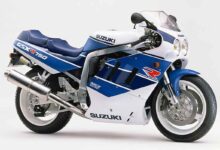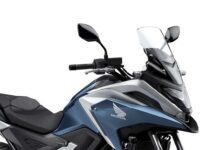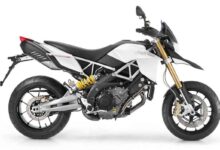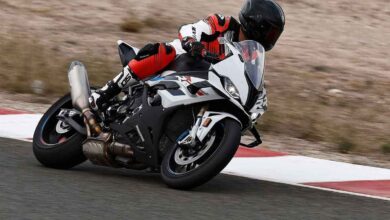The Importance of Wearing a Motorbike Helmet 2023
In this blog post, we will delve into the crucial topic of motorbike helmets. We will explore why wearing a helmet is essential for every motorcyclist, discussing its role in protecting the head and enhancing overall safety. From understanding the importance of helmet standards to highlighting the benefits of different helmet types, we aim to equip riders with vital information to make informed choices about their safety gear.
Contents
- 1 Introduction
- 2 Protection from Head Injuries
- 3 Understanding Helmet Standards
- 4 Section 3: Types of Motorbike Helmets
- 5 Benefits of Wearing a Helmet
- 6 Wind Noise
- 7 Weather Protection
- 8 Protection From Flying Objects
- 9 Insurance and Medical Bills
- 10 Identifying DOT-Approved Helmets
- 11 Get the Best Motorcycle & ATV Helmets in Miami
- 12 Helmet Fitment and Maintenance
- 13 Why is it important to wear a motorcycle helmet?
- 14 What is the importance of wearing a helmet?
- 15 Why should you replace your motorcycle helmet every 5 years?
- 16 How long before motorcycle helmets expire?
- 17 What is wearing helmet advantages and disadvantages?
- 18 Conclusion
Introduction
As motorcyclists hit the open road, their helmets become their primary line of defense against potential accidents and injuries. While some riders might underestimate the significance of wearing a helmet, it is crucial to emphasize that it can save lives. In this section, we will dive into statistics that highlight the significance of wearing a motorbike helmet.
According to various studies conducted worldwide, motorbike helmets have been proven effective in reducing fatalities and head injuries by up to 69%. These statistics alone demonstrate how pivotal it is for every rider to wear a properly fitting and certified helmet.
Protection from Head Injuries
If you are unfortunate enough to be involved in a motorcycle accident, you may know that some of the worst injuries are caused by falls. Given that your motorcycle is brought to an abrupt stop, the rider tends to be thrown off the bike. Many riders suffer serious head injuries when smashed against the road, another vehicle, or objects such as trees. A motorcycle helmet prevents this by absorbing all the shock caused by the impact, which, in turn, saves you from serious head injuries that can sometimes even be fatal.
Understanding Helmet Standards
Motorcycle helmets are subjected to rigorous testing and certification processes to ensure they meet specific safety standards. Here we will discuss key helmet certifications found globally:
DOT (Department of Transportation):
The DOT standard is widely recognized in many countries, including the United States. Helmets marked with DOT certification meet specific impact attenuation requirements and must provide adequate coverage while also securing tightly under the chin.
ECE (Economic Commission for Europe):
ECE is another prevalent certification worldwide. This standard focuses on impact absorption capabilities as well as visibility through mandated field-of-vision requirements. It ensures that helmets offer optimal protection without compromising peripheral vision.
Snell Memorial Foundation:
The Snell certification surpasses basic regulatory requirements and signifies superior protection levels. Helmets with Snell certification undergo more rigorous testing, including additional impact tests at different velocities and angles. This certification is commonly seen in racing and high-performance helmets.
Section 3: Types of Motorbike Helmets
In this section, we will discuss the various types of motorcycle helmets available in the market, highlighting their features, benefits, and suitable riding conditions:
Full-Face Helmets:
Full-face helmets provide the most comprehensive protection for motorcyclists. They cover the entire head and face, including chin protection. These helmets are popular among riders who prioritize safety and desire maximum coverage. Full-face helmets excel in reducing wind noise, providing optimal visibility, and protecting against all elements.
Modular Helmets:
Modular or flip-up helmets combine features of both full-face and open-face designs. With a hinge mechanism allowing the chin bar to be lifted, these helmets offer versatility by switching between full-face protection and an open face for increased convenience during short stops. Modular helmets are favored by touring enthusiasts due to their flexibility.
Open-Face Helmets:
Open-face helmets offer partial head protection while leaving the face exposed. They typically consist of a hard shell with a visor but lack chin protection. These helmets provide a sense of freedom with increased ventilation and better visibility while maintaining adequate safety levels.
Half-Helmets:
Half-helmets cover only the top portion of the head, leaving the face completely exposed. While they provide minimal coverage compared to other helmet types, they remain popular among riders seeking a lightweight option that allows maximum airflow without compromising legal requirements for helmet use.
Benefits of Wearing a Helmet
Now that we have explored different helmet types let’s dive into the numerous benefits attached to wearing them:
Protection Against Head Injuries:
Motorbike accidents often result in severe head injuries, which can be life-threatening or lead to long-term disabilities. Wearing a helmet significantly reduces the risk of such injuries by absorbing and spreading the force of impact, offering vital protection for your skull, brain, and face.
Shielding from External Elements:
Helmets provide an additional layer of protection against external elements such as dust, debris, insects, and adverse weather conditions. This protection not only enhances comfort during rides but also prevents distractions that could potentially lead to accidents.
Noise Reduction:
Wearing a helmet reduces wind noise when riding at high speeds. Excessive noise can be fatiguing and potentially damage hearing over time. By reducing wind noise, helmets contribute to a safer and more enjoyable riding experience.
Enhanced Visibility:
Certain helmet designs incorporate reflective materials or bright colors, improving visibility to other motorists on the road. Increased visibility minimizes the chances of being involved in accidents caused by other drivers failing to notice motorcyclists.
Psychological Confidence:
Knowing you are wearing a reliable helmet boosts your confidence while riding. A rider who feels secure is more likely to focus on the road ahead, make better decisions, and react swiftly to potential hazards.
Wind Noise
When riding a bike, you need protection from the wind in two ways: direct impact on your face and powerful drafts. The force of the wind can be significant, especially at high speeds. In addition to the wind force, having drafts on your face can interfere with your vision, which becomes more likely to occur at high speeds and poses a significant danger. Wearing a motorcycle helmet helps keep the wind off your face and improves vision.
Weather Protection
If you try to ride your bike in the rain without wearing a motorcycle helmet, the water will likely interfere with your vision. A good helmet keeps all water, snow, and other weather elements off your visor, allowing for clearer visibility.
Protection From Flying Objects
One unique risk of riding a motorcycle is being exposed to flying objects. While protective clothing and gloves can shield other parts of the body, the head is particularly vulnerable to injuries caused by flying objects. These objects may include trash thrown by other road users or overhanging branches on narrow roads. Wearing a motorcycle helmet is an effective way to prevent such injuries. The sturdy material of the helmet absorbs impacts and prevents tissue injuries.
Insurance and Medical Bills
Wearing a helmet reduces healthcare costs if you are involved in an accident while riding. Even if you are not directly involved in an accident, without a helmet, you are putting yourself at risk for more severe injuries. Flying objects or certain weather conditions hitting your head at speeds exceeding 30 miles per hour can cause serious harm. Additionally, wind noise can damage both your vision and hearing, leading to medical expenses.
Identifying DOT-Approved Helmets
The US Department of Transportation (DOT) has established standards for approved helmets that are relatively easy to identify. For example, DOT-approved helmets have thick linings inside them, while non-DOT helmets either have thin linings or none at all. DOT-approved helmets also have full face covers without any protrusions larger than a fifth of an inch. In contrast, non-approved helmets can have various protrusions, such as ornamental horns.
Get the Best Motorcycle & ATV Helmets in Miami
When it comes to top-quality motorcycle and ATV helmets, your best option is Riva Motorsports Miami. We are a family-owned business that has been operating since 1979, which means we have the expertise and experience to enhance your riding experience. Feel free to browse our online product catalog of new motorcycles and ATVs to choose the vehicle of your dreams and get an instant quote.
Helmet Fitment and Maintenance
While choosing the right type of helmet is crucial, ensuring proper fitment is equally important. In this section, we will discuss how to find a well-fitting helmet and offer tips for proper maintenance:
Helmet Fitment:
To ensure the best fit possible, measure your head circumference with a tape measure above your eyebrows and around the widest part of your head. Referencing manufacturers’ size charts will help determine which size suits you best. When trying on helmets, ensure they feel snug but not uncomfortably tight.
Maintenance Tips:
Regularly inspect your helmet for any signs of wear or damage such as cracks in the shell or loose padding. Clean the outer shell with mild soap and water while avoiding harsh chemicals that may degrade its integrity. Additionally, replace any worn-out straps or buckles promptly.
Why is it important to wear a motorcycle helmet?
Motorcycle crash injuries and deaths are preventable. A universal helmet law is the single most effective way for states to save lives and cost savings related to motorcycle crash injuries.
Every year there are thousands of deaths and injuries to motorcyclists involved in crashes. More than 5,500 motorcyclists died on our nation’s roads in 2020, and more than 180,000 were treated in emergency departments for crash injuries. The economic costs of these injuries and deaths are significant.
Motorcycle helmets can save lives and reduce injuries
- Helmets saved an estimated 1,872 lives in 2017.
- 749 more lives could have been saved if all motorcyclists had worn helmets in 2017.
- Each year, the United States could save $1.5 billion in economic costs if all motorcyclists wore helmets.
- Motorcycle helmets are 37 percent (for riders) and 41 percent (for passengers) effective in preventing deaths.
- Helmets reduce the risk of head injury by 69%.
What is the importance of wearing a helmet?
Studies have shown that wearing a helmet reduces your risk of a serious brain injury and death because during a fall or collision, most of the impact energy is absorbed by the helmet, rather than your head and brain.
Why should you replace your motorcycle helmet every 5 years?
Do motorcycle helmets expire? Helmets have a limited lifespan because the resin and other materials used in the manufacturing process over time can be effected by your body fluids, hair oils, ultraviolet light and normal wear and tear. It is prudent advice to replace your helmet 5 years after purchase or 7 years after the production date.
How long before motorcycle helmets expire?
Despite the short answer I wrote above for those in a hurry, it isn’t quite as simple as stating motorcycle helmets expire in exactly 5 years.
There are several really important considerations which can mean a helmet will last longer than a specific time or indeed need to be replaced sooner.
What is wearing helmet advantages and disadvantages?
Why people DO wear helmets:
- Higher visibility in general.
- Weather protection.
- Up to 47% of injured cyclists get head injuries.
- Wearing a helmet can provide up to an 88% reduction in the risk of head injury*
- I want to set a good example to my children.
- It makes me feel less exposed and therefore safer.
Conclusion
Motorbike helmets are not merely accessories but crucial safety gear that every rider should prioritize. By wearing a certified helmet that fits properly, riders significantly reduce the risk of severe head injuries and enhance overall safety on the road. Understanding helmet standards, exploring different helmet types, and recognizing the benefits they offer empowers riders to make informed decisions when choosing their protective gear. Remember, your head is irreplaceable – protect it with a reliable motorbike helmet.







